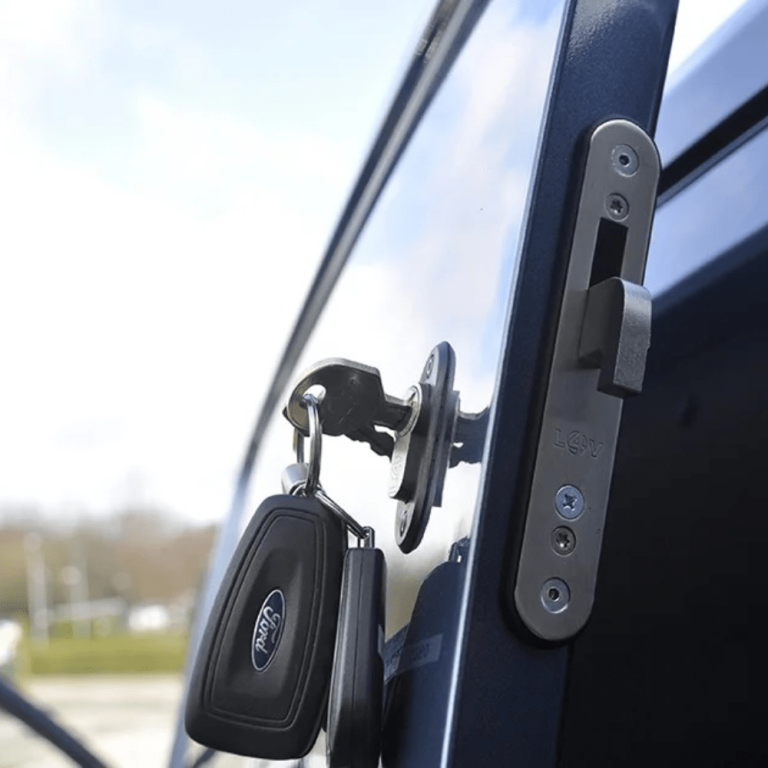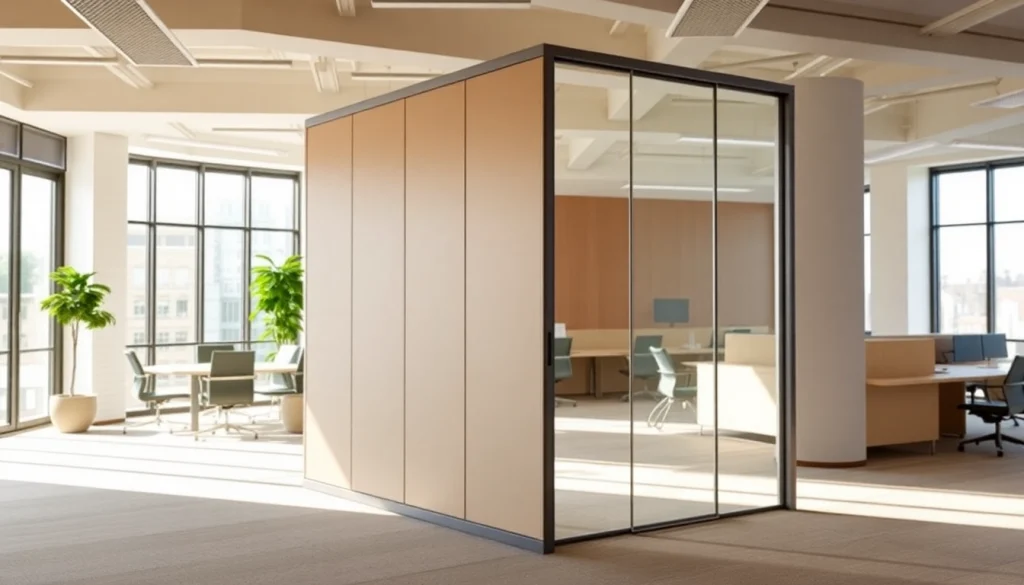Understanding Folding Partition Walls
What is a Folding Partition Wall?
A folding partition wall is a versatile and innovative solution designed to create flexible spaces within commercial and residential environments. These partition walls can be opened, closed, or adjusted to divide a room as needed, allowing for seamless transitions between different configurations. Unlike traditional walls, folding partitions are movable, granting the ability to customize the space based on current needs—whether for privacy, sound control, or multifunctional purposes.
Available in a range of materials and designs, folding partition walls cater to diverse requirements, from acoustical properties to aesthetic harmony within an interior. For a deeper exploration of available options, including visual examples and specifications, you can explore a variety of Folding Partition Wall solutions.
Key Features and Benefits
- Space Efficiency: Folding partition walls maximize the usability of space, making them ideal for multifaceted environments such as offices, schools, and event centers. Their ability to retract allows for the rapid transformation of an area from open to divided.
- Sound Isolation: Many folding partitions incorporate soundproofing features preventing noise transfer between spaces, enhancing privacy in offices or meeting rooms.
- Design Versatility: Available in a variety of finishes, colors, and materials (such as glass, wood, or fabric), these partitions can complement any decor, making them just as functional as they are stylish.
- Cost-effectiveness: Investing in folding partitions can reduce the need for more permanent renovations, proving to be a more flexible and budget-friendly option for space management.
Applications in Various Environments
Folding partition walls are employed across various settings, including:
- Offices: In contemporary corporate settings, these partitions facilitate dynamic workspace design, accommodating both collaborative and private working arrangements.
- Educational Institutions: Schools and universities utilize folding partitions to create adaptable classrooms, enabling easy reconfiguration for lectures, group work, or examinations.
- Hospitality: Hotels and conference centers frequently deploy folding walls for event spaces, allowing quick adjustment for different group sizes and functions.
- Healthcare: Hospitals and clinics leverage these partitions for creating temporary examination rooms or patient privacy areas.
Choosing the Right Folding Partition Wall
Factors to Consider When Selecting
When selecting a folding partition wall, several factors should be taken into account to ensure effectiveness and satisfaction:
- Purpose: Identify the primary function of the partition. Whether for sound control, aesthetic appeal, or maximizing space, understanding the usage will guide the decision.
- Material: Choose materials based on durability, maintenance, and acoustical performance. For instance, glass walls provide a modern look but may not offer effective sound isolation compared to solid panels.
- Size and Configuration: Consider the dimensions and how the partition will operate within the given area. Measure the space to ensure that the partition can be easily moved and stored.
- Budget: Evaluate the total cost, including installation and maintenance. Look for options that offer the best combination of quality and budget adherence.
Comparing Material Options
Folding partition walls come in a variety of materials, each offering unique benefits:
- Glass: Provides a sleek and modern aesthetic, enhancing natural light in the surrounding areas. However, glass partitions may require additional soundproofing measures.
- Wood: Offers a warm, traditional look suitable for offices and hospitality environments. Wood can be sound-absorbent but may require more maintenance.
- Fabric: Often used for portable partitions, fabric options are lightweight and can be printed with designs, making them highly customizable but less durable than other materials.
- Metal: Generally used in commercial settings, metal partitions are extremely durable and resistant to wear, suitable for high-traffic environments.
Understanding Design Flexibility
The design flexibility of folding partition walls makes them appealing to architects and designers. Their capability to be customized in terms of:
- Size: Most partition systems can be tailored to fit specific dimensions and match the environment’s scale.
- Operation: There are various operating systems, such as top-hung, floor-mounted, and mobile options, allowing for different levels of functionality.
- Finish: The surface finish can range from painted colors to laminates and veneers, creating opportunities to enhance the space’s overall aesthetic.
Installation Process for Folding Partition Walls
Preparation and Planning
Before installation, careful planning is crucial. This involves:
- Site Assessment: Evaluate the intended location for the folding partition, taking note of wall layouts, electrical features, and any existing structures that may interfere.
- Design Considerations: Define how the wall will operate, including which direction it will fold and how much space it will require when closed.
- Permits: In some cases, building permits may be necessary, depending on local regulations and whether it involves significant construction work.
Steps for Professional Installation
While some may opt for a DIY approach, hiring professionals ensures a seamless installation process. Key steps include:
- Framework Preparation: Installing the appropriate tracks or mounting systems necessary for the partition system.
- Panel Setup: Fixing the partition panels onto the provided framework, ensuring alignment and stability.
- Final Adjustments: Checking for functionality—opening and closing the panels smoothly and ensuring any locking mechanisms are secure.
- Finishing Touches: Sealing edges and covering any exposed hardware for a clean appearance while also ensuring the partition meets safety standards.
DIY Installation: Pros and Cons
Some individuals might consider DIY installation to save on costs, but it’s essential to weigh the benefits against potential challenges:
- Pros:
- Cost savings on labor.
- Greater involvement in the design and installation process.
- Flexibility in scheduling the work at your convenience.
- Cons:
- Potential for improper installation leading to functional issues.
- Time-consuming, particularly for those unfamiliar with the process.
- Limited tools and resources may hinder achieving a professional finish.
Maintaining Your Folding Partition Wall
Cleaning and Care Best Practices
Maintaining the appearance and performance of folding partition walls is crucial for longevity. Here are some best practices:
- Regular Dusting: Utilize a microfiber cloth or dusting tool to regularly clean the surfaces and keep particulate buildup at bay.
- Spot Cleaning: For fabric panels, use appropriate fabric cleaners, while glass can be cleaned with standard glass cleaner for a streak-free finish.
- Inspect Mechanisms: Periodically check moving parts and tracks to ensure there is no obstruction or buildup that could hinder operation.
Common Issues and Quick Fixes
Some of the most common problems associated with folding partition walls and their solutions include:
- Stuck Panels: Use a silicone-based lubricant on hinges and tracks if panels are difficult to operate.
- Sound Leakage: If soundproofing is inadequate, additional insulating materials—or sealing any gaps—can enhance acoustical performance.
- Paint Wear: Touch up any damaged paint with matching color spray or touch-up paint to maintain aesthetics.
When to Call a Professional
For more significant issues, consulting a professional is advised. Situations may include:
- Persistent operational problems after basic troubleshooting.
- Structural damage to the wall or supporting mechanisms.
- Major aesthetic restoration or modifications requiring significant alterations to the original design.
Case Studies: Successful Implementations
Office Spaces that Benefit
A company in San Francisco sought to create a collaborative yet private workspace for its employees. By incorporating folding partition walls, they were able to transform a single large area into multiple meeting rooms and breakout spaces. Consequently, employee satisfaction increased as individuals could choose between collaborative environments and quieter areas based on their tasks.
Commercial Platforms: Trends and Insights
Recent data highlights a growing trend in flexible workspace solutions, with folding partitions leading the way. Commercial enterprises, particularly in retail, are restructuring layouts to adjust to an evolving market landscape where adaptability is crucial. More retailers are utilizing folding partitions for creating pop-up shops, allowing for swift changes based on market demand.
Customer Testimonials and Experiences
Feedback from customers has consistently highlighted the impact of folding partition walls on organizational efficiency. One restaurant owner noted, “The ability to change the layout quickly based on occupancy has transformed our service. We can accommodate various event types without significant overhead.”
In conclusion, the adoption of folding partition walls in various environments provides unparalleled flexibility, efficiency, and customization. By understanding their benefits, installation practices, and maintenance, businesses and homeowners alike can significantly enhance their spatial capabilities.





